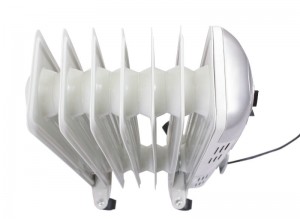Proper Maintenance of an Oil-Fired Appliance
Nearly half of fall has already passed by with the arrival of November. Winter is just a few weeks away, and the weather is here to prove it. Long gone are hot afternoons full of shorts and sandals. Instead, most people do not leave the house without bundling up in a jacket and scarf, and everyone has the impending winter season on their minds. Homeowners especially should at least begin turning on their heating appliances to ensure they are in working order, and for those who rely on oil-fired appliances, now is the time to schedule annual servicing. Oil-fired heating systems can consist of boilers with hot water distribution or furnaces with forced air distribution. Both setups contain finely tuned mechanisms that require regular maintenance to keep them working safely and efficiently.
An oil-fired appliance functions by spraying a fine mist of fuel oil into a combustion chamber along with a steady flow of air, and igniting the combination with a spark. The resulting flame creates hot air that heats up the heat exchanger walls before flowing out through the exhaust stack. The heat exchanger walls transfer the heat to the distribution medium (either water or air), which is then forced throughout the home. Boilers utilize this mechanism with the distribution medium of water, and the heated water travels throughout the water pipes in the home to radiate heat in the various rooms. A furnace also uses this mechanism, but it heats up air instead of water, which is blown through ducts to the rest of the house.
Whether the system uses water or air does not affect the fact that the oil-fired appliance will still need servicing. A number of problems can arise with the oil system that requires a professional eye to find and repair. One such problem is an inefficient mixture of air and oil entering the combustion chamber, which can cost extra money every winter in surplus fuel burned. Different situations can cause this problem, such as an old or clogged burner nozzle, an improperly calibrated fuel pump, and incorrectly adjusted air volume and draft controls. While these fixes are simple, they should only be made by a professional to ensure they are done correctly.
Another common issue with oil-fired appliances is failure to create a flame. This can be a result of a variety of problems, and fixing it immediately is crucial to avoid explosions or poisoning. The combustion chamber could be leaking, the stack control may not be functioning properly, or the ignition electrodes might be dirty or broken. A professional can spot and repair these issues quickly and effectively.
If your home utilizes an oil-fired appliance for heating, call to schedule its annual servicing before the temperatures drop any farther. For those living in Suffolk County, New York, you can contact Chief Chimney Services, Inc. for a professional consultation.


